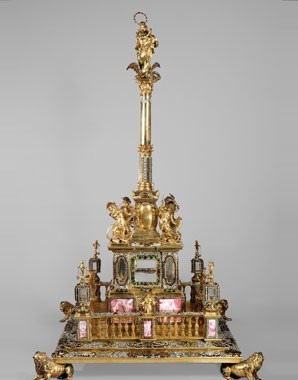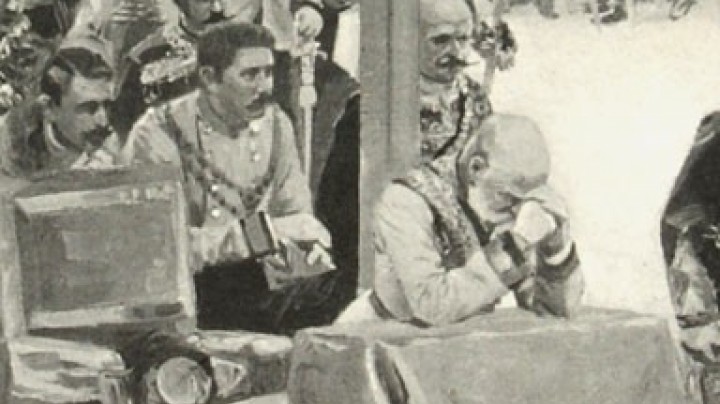The Habsburg heaven: patron saints of lands and dynasty
The veneration of canonized rulers as patron saints of the Habsburg lands was not only a question of piety, but also an intensely political affair. The ruling monarch saw himself as a successor of the saints, whose reliquaries served as attributes at the ruler’s accession as a sign of legitimate, divinely ordained sovereignty.
In the Middle Ages, saints were seen symbolically as the pillars of the state. As soon as the cult of a specific saint had rooted itself in folk piety, he or she became an important figure of identification. Examples of this are St Wenceslas of Bohemia and the sainted King Stephen of Hungary, who had been popularly venerated symbols of their nations and guarantors of unity.
There was no one overall patron saint for all the Austrian lands. The Habsburg sovereign princes wished to remedy this deficiency with a national patron saint who could also act as the patron saint of the dynasty.
A suitable figure was found in Margrave Leopold III from the House of the Babenbergs, a historical personage from the early days of Austria’s development into a national entity. Leopold (1073–1136) had proved his devoutness by founding several important Austrian monasteries, including Klosterneuburg, and as a Babenberg counted as an ancestor of the Habsburgs via complicated genealogical lines. However, first of all they had to secure his canonization in Rome. Rudolf IV made a first attempt in 1358, but it was not until 1485 that the endeavours of Frederick III brought about his canonization. Leopold’s remains were now released for veneration as saintly relics; their removal from his tomb in the abbey at Klosterneuburg was marked by one of the first official Court pilgrimages in 1506; Maximilian I participated wearing the robes of an archduke of Austria.
During the Counter-Reformation, the Leopold cult was intensively propagated under Leopold I. In 1663 the emperor made his patron saint the patron saint of all the Austrian lands. A Court pilgrimage was held every year on St Leopold’s Day (15 November). The Austrian archducal coronet as symbol of the core lands of Habsburg dominion was kept together with the relic of his skull, thus entrusted as it were to the protection of the saint
The saintly margrave was now incorporated into the Habsburg heaven and invoked in magniloquent tracts and graphic homilies as a unifying figure. However, the Leopold cult actually became truly popular only in Vienna and Lower Austria, thereby supplanting their original patron saint, St Koloman.
Another saint propagated by the Habsburgs was Joseph, the foster-father of Jesus. The state-decreed veneration of this saint, hitherto neglected in Central Europe, was initiated in the seventeenth century after the model of southern Europe. Joseph was declared the protector in times of need, such as hunger or war, and added to the national patron saints of Austria and Bohemia. In 1675 he was even elevated to become patron saint of the Holy Roman Empire and then in 1677 dynastic patron saint of the Imperial House; Emperor Leopold I’s son born the next year, the later Emperor Joseph I, was given the saint’s name, hitherto unusual in the dynasty. ‘Joseph’ subsequently became one of the most popular male forenames in Central Europe until well into the twentieth century.



















